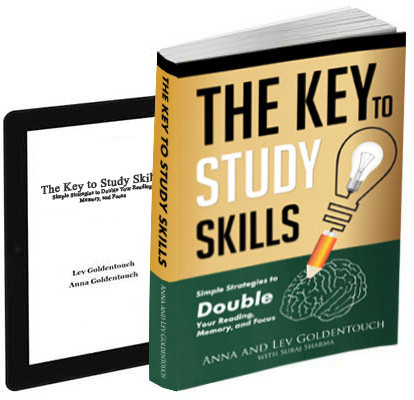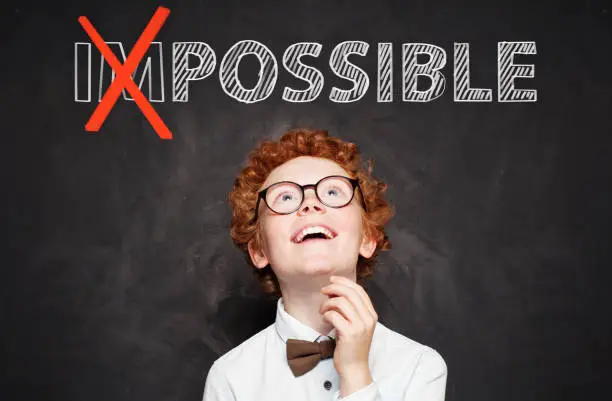What is a Growth Mindset?
A growth mindset is a foundational concept in educational psychology introduced by Dr. Carol Dweck. It represents the belief that intelligence and abilities are not fixed traits but can be cultivated through consistent effort, effective learning strategies, and persistence. This contrasts sharply with a fixed mindset, where individuals perceive their intelligence as static and unchangeable. The implications of adopting a growth mindset are profound, particularly in educational settings where students are constantly tested by academic and personal challenges.
For students, embodying a growth mindset redefines the way they approach learning. It cultivates resilience and a willingness to engage in continuous self-improvement, transforming how they perceive mistakes—not as failures but as integral steps in their journey toward mastery and excellence.
How Do Students With A Growth Mindset See Their Mistakes?
How do students with a growth mindset see their mistakes? This is a crucial question for educators, parents, and policymakers. Students with a growth mindset approach mistakes as opportunities for growth and learning. They understand that errors are an essential part of the learning process, signaling areas that need further exploration and effort.
Rather than perceiving a mistake as a measure of their innate abilities, these students see it as feedback that guides their learning strategies. They analyze why a mistake was made, reframe it as a challenge to overcome, and use it to strengthen their understanding and approach. This mindset encourages a cycle of continuous improvement and fosters a culture where students are motivated to push their boundaries and embrace intellectual risks.
Growth Mindset vs. The Fixed Mindset
The contrast between a growth mindset and a fixed mindset highlights why some students thrive in the face of challenges while others falter. A fixed mindset is characterized by the belief that abilities are static and that success is tied to inherent talent. Students with a fixed mindset often shy away from challenges to protect their self-image. Mistakes are seen as failures that undermine their competence, leading to frustration and a reluctance to try again.
On the other hand, a growth mindset posits that intelligence and skills can be developed through hard work and learning from mistakes. Students with this mindset view challenges as opportunities to enhance their capabilities. They are more likely to take on difficult tasks, stay persistent despite obstacles, and view mistakes as vital learning experiences. This orientation not only improves academic outcomes but also equips students with life skills such as adaptability, problem-solving, and resilience.
The Impact of a Growth Mindset on Dealing with Mistakes
How does having a growth mindset help students deal with failures and mistakes? Students with a growth mindset see their mistakes as a learning tool that drives progress. This mindset changes their response to setbacks in several key ways:
- Promoting Reflective Learning: Students with a growth mindset engage in metacognitive practices, reflecting on what went wrong and what strategies can be employed to improve. This reflective process builds critical thinking skills and enhances their ability to approach similar problems with a refined perspective.
- Encouraging Feedback-Seeking Behavior: Instead of avoiding feedback, growth-minded students actively seek constructive criticism. They understand that feedback is an essential component of learning, providing insights that help them correct their course and deepen their understanding.
- Fostering Resilience and Adaptability: With a growth mindset, students develop the psychological resilience to face failures without becoming disheartened. This resilience helps them recover quickly from mistakes and motivates them to try different strategies until they find what works.
- Building Intrinsic Motivation: When students believe that their effort directly contributes to improvement, they become intrinsically motivated. They are more likely to put in the sustained effort needed to master challenging concepts, which leads to long-term academic success.
This positive approach transforms the way students interact with their learning process, enabling them to shift from a results-oriented mindset to a process-oriented one. This shift is crucial in fostering not only academic achievements but also emotional and intellectual growth.
Effective Strategies to Cultivate a Growth Mindset in Students
Developing a growth mindset in students is a multifaceted process that requires deliberate efforts by educators, parents, and the students themselves. Below are some proven strategies to foster this mindset:
1. Emphasize Effort Over Outcome
One of the most effective ways to develop a growth mindset in students is to shift the focus from results to the effort and strategies they employ. Praise that emphasizes the process, such as “I’m proud of how you tackled that problem and found new ways to approach it,” reinforces the idea that effort and adaptability are what lead to growth.
2. Integrate Failure as Part of Learning
Creating an environment where mistakes are seen as a natural and beneficial part of the learning process is crucial. Students should be taught that failures do not define their potential but reveal areas that require more attention. Sharing examples of successful people who overcame significant failures can also help illustrate this point.
3. Provide Constructive Feedback
Feedback should be specific, actionable, and framed positively. Instead of highlighting what was done wrong, focus on what can be improved and how to approach it differently. This encourages students to see feedback as a tool for progress rather than a critique of their abilities.
4. Encourage Reflective Practices
Encouraging students to regularly reflect on their learning process helps reinforce a growth mindset. Reflection journals, peer discussions, and self-assessment exercises enable students to articulate what they learned from their mistakes and how they plan to adjust their strategies moving forward.
5. Model a Growth Mindset
Adults, especially educators and parents, need to model growth mindset behaviors themselves. When students see influential figures openly acknowledging their mistakes and demonstrating how they learn from them, they are more likely to adopt the same attitude. Teachers can share personal stories about how they overcame challenges through persistence and adaptation.
The Importance of a Growth Mindset for Teachers
Fostering a growth mindset for teachers is equally important, as it directly impacts their teaching effectiveness and the learning environment they create. Teachers with a growth mindset are more likely to experiment with new teaching strategies, learn from their experiences, and adapt their methods to better support students’ needs.
Ways Teachers Can Cultivate Their Own Growth Mindset:
- Engage in Continuous Learning: Teachers should commit to ongoing professional development to stay updated with the latest educational practices and research.
- Reflect on Teaching Practices: Regularly reviewing what worked well and what didn’t can help teachers refine their approach and improve their instructional methods.
- Create a Positive Classroom Culture: By emphasizing the value of learning over getting the right answer, teachers can create a supportive environment where students feel comfortable taking risks and making mistakes.
Applying Growth Mindset Strategies in the Classroom
Growth mindset in the classroom is more than just a teaching philosophy; it requires practical application to create a lasting impact. Teachers can implement the following strategies to nurture a growth-oriented learning environment:
1. Design a Safe Space for Learning
Classrooms should be spaces where students feel safe to voice their ideas and make mistakes. This psychological safety encourages active participation and risk-taking, key components for developing resilience and problem-solving skills.
2. Use Mistakes as Learning Opportunities
Teachers should make a point to highlight and celebrate mistakes during lessons. For example, they can dedicate time to discuss common misconceptions and guide students through the process of correcting them. This not only demystifies errors but normalizes them as part of learning.
3. Encourage Collaborative Problem Solving
Group activities and discussions that require students to work together on challenging problems help them learn from each other’s mistakes. Peer learning fosters an environment where knowledge is shared and mistakes are viewed as shared opportunities for growth.
4. Implement Growth-Oriented Assessments
Assessments should be structured in a way that allows students to learn from their mistakes and improve. Incorporating formative assessments, where feedback is used to guide learning rather than solely evaluate it, can promote a growth mindset.
Teachers as Role Models for Growth-Oriented Learning
Teachers as growth mindset role models have a profound influence on their students. By embodying the principles of growth and resilience, teachers can inspire students to adopt similar attitudes. When educators share their own stories of challenges and how they overcame them, it humanizes the learning process and shows students that even experts continue to grow and learn.
Growth Mindset Initiatives and Activities in Schools
Schools looking to implement growth mindset initiatives should consider programs and activities that make learning dynamic and interactive. Some effective approaches include:
1. Mistake-Friendly Projects
Encourage students to participate in projects where mistakes are inevitable, such as coding challenges or design projects. These activities teach students to iterate and refine their approach after each failed attempt, building resilience and analytical skills.
2. Celebrating Learning Milestones
Acknowledging students’ efforts and progress rather than just their achievements encourages a focus on the journey. Celebrating milestones helps students see how far they’ve come and builds their confidence to tackle future challenges.
3. Growth Mindset Workshops and Seminars
Organizing workshops and seminars for both students and teachers can reinforce growth mindset principles. These sessions can cover the latest research, practical applications, and success stories of individuals who exemplified a growth mindset.
The Long-Term Benefits of a Growth Mindset
Why does a growth mindset matter beyond the classroom? Students who adopt a growth mindset carry this outlook into their future endeavors. They become adults who are more willing to take risks, seek feedback, and adapt to changing circumstances. This adaptability is essential for personal development and professional success in an ever-changing world.
A growth mindset fosters lifelong learning, making individuals more open to new experiences and better equipped to handle the complexities of life and work. They become leaders who encourage innovation, colleagues who support team growth, and learners who are never satisfied with the status quo.
Concluding Thoughts on Growth Mindset and Mistakes
How do students with a growth mindset see their mistakes? They see them as an essential part of growth and progress. For these students, mistakes are not a reflection of their limitations but a map pointing toward greater understanding and mastery. This mindset reshapes how they approach learning and life, instilling a deep-seated belief in the power of perseverance, adaptability, and continuous improvement.
Creating an educational culture that embraces this perspective will prepare students not just for academic success but for a fulfilling and resilient life. By cultivating a growth mindset in both students and educators, we lay the groundwork for a future where challenges are met with confidence and mistakes are embraced as the most valuable teachers.

Get 4 Free Sample Chapters of the Key To Study Book
Get access to advanced training, and a selection of free apps to train your reading speed and visual memory

